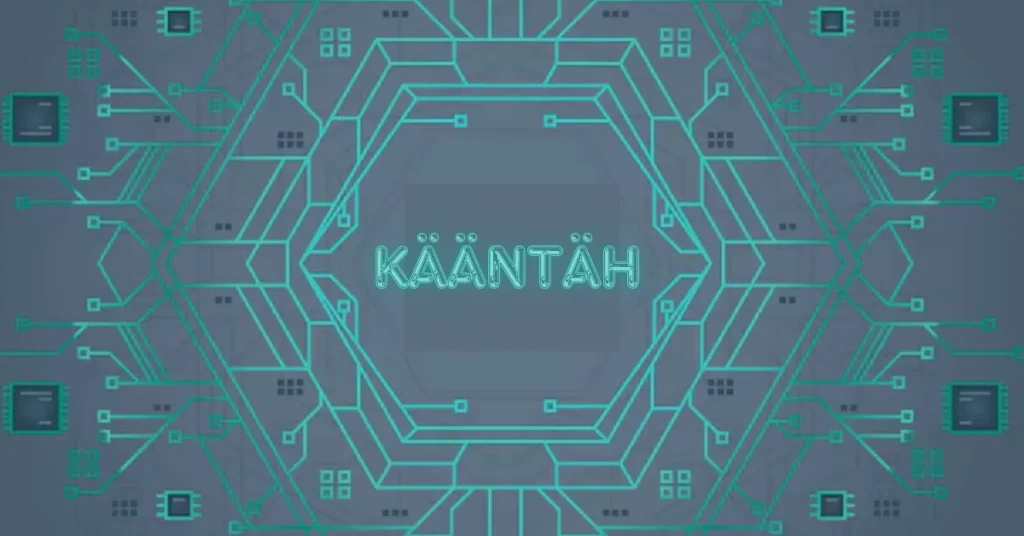Introduction to the Finnish language
The Finnish language is a fascinating tapestry woven with rich history and unique characteristics. With its roots in the Uralic family, Finnish stands out for its melodic sounds and complex grammar. But what happens when this beautiful language meets the world of translation? Enter kääntäh — a term that encapsulates the art of Finnish translation.
Translation in Finland isn’t just about converting words from one language to another. It’s an intricate dance between culture, context, and creativity. As we delve into the depths of Kääntäh, we’ll uncover how translators navigate this vibrant linguistic landscape while honoring tradition and embracing modernity. Join us on this journey as we explore Finland’s translation legacy!
History of translation in Finland
The history of translation in Finland is a fascinating journey that dates back several centuries. It began earnestly during the 16th century when religious texts were translated to make them accessible to Finnish speakers. The New Testament was among the first significant works, helping standardize the language.
Throughout the 19th century, as nationalism surged, translations played a crucial role in shaping Finnish identity. Works from Swedish and Russian literature found their way into Finnish, enriching its literary landscape.
By the early 20th century, translators like Maija-Liisa Hänninen emerged, promoting international authors while also nurturing Finnish literature. This era marked a shift towards modern techniques and styles.
Today, translation reflects not just linguistic skills but also cultural understanding. As Finland embraces globalization, its translation practices continue evolving while honoring traditional methods rooted deeply in history.
The impact of culture and language on translation
Culture and language are intertwined, shaping how we express ideas. In translation, this relationship is crucial. Words carry meanings influenced by cultural nuances. A simple phrase can evoke entirely different emotions depending on the context.
Take Finnish culture, for example. The concept of “sisu” represents resilience and determination—a term without a direct English equivalent. Translating it requires more than just words; it demands an understanding of Finnish identity.
Language also evolves with culture, introducing new terms as society changes. This makes staying updated essential for translators who wish to accurately convey meaning.
Moreover, humor often poses challenges in translation due to cultural references or idiomatic expressions that may not resonate universally. What’s funny in one culture might fall flat in another.
Understanding these dimensions deepens the translator’s toolkit, allowing them to bridge gaps between languages while honoring both cultures involved.
Traditional Finnish translation methods
Traditional Finnish translation methods are deeply rooted in the country’s rich linguistic heritage. Historically, translators relied on a nuanced understanding of both source and target languages.
One common approach involved meticulous word-for-word translations, preserving original meanings while adapting phrases to fit Finnish grammar and stylistic norms. This method demanded patience and an intimate knowledge of cultural context.
Another notable technique was the use of glossaries or reference texts to maintain consistency across various works. Translators often compiled dictionaries that included idiomatic expressions unique to Finnish culture.
Storytelling traditions also influenced how literature was translated. Oral narratives shaped the rhythm and flow of translations, ensuring they resonated with Finnish audiences.
These methods reflect a commitment to fidelity—both to the text’s message and its emotional weight, laying a strong foundation for contemporary practices in kääntäh today.
Modern approaches to translation in Finland
Modern translation in Finland has evolved significantly with the advent of technology. Digital tools now play a crucial role in streamlining the process. Translators use software that enhances efficiency, while also maintaining linguistic integrity.
Collaboration is another key aspect of contemporary Finnish translation. Teams often consist of native speakers and domain experts to ensure accuracy across various fields such as literature, science, and law.
The rise of machine translation has sparked debates among professionals. While some embrace it for routine tasks, others emphasize the importance of human touch in nuanced texts.
Social media platforms have opened new avenues for translators to showcase their work and connect with audiences globally. This shift not only promotes Finnish literature but also encourages cultural exchange through translated materials.
Training programs are increasingly incorporating these modern techniques, preparing a new generation of translators equipped to navigate both traditional methods and cutting-edge technologies.
Notable Finnish translators and their works
Finland boasts a rich tapestry of translators who have shaped its literary landscape. One notable figure is Väinö Linna, renowned for his translations of Russian works that brought new perspectives to Finnish readers.
Another prominent name is Aila Meriluoto, celebrated for her ability to convey the nuances of poetry. Her translations open doors to international literature while preserving the original’s essence.
Sirkka-Liisa Niemi stands out in children’s literature translation. She has introduced beloved stories from around the globe, making them accessible and enjoyable for young Finnish audiences.
There’s Jukka Mallinen, whose work on contemporary fiction has connected Finland with global literary trends. His skillful translations resonate deeply with modern readers seeking diverse narratives.
Each translator contributes uniquely to kääntäh, enriching Finland’s cultural dialogue and expanding its literary horizons.
Challenges and considerations for translating into Finnish
Translating into Finnish presents unique challenges due to its complex structure. The language boasts a rich array of grammatical cases, which can alter meanings significantly based on context.
Another consideration is the cultural nuances embedded within the text. Finnish expressions often carry specific connotations that may not have direct equivalents in other languages. A literal translation could lose these subtleties, impacting the overall message.
Additionally, idiomatic phrases pose difficulties for translators. They require an understanding of both cultures to convey meaning accurately without losing essence.
Moreover, regional dialects add another layer of complexity. Different areas in Finland use distinct vocabulary and pronunciation, affecting how translations are perceived.
Maintaining fluency while being faithful to the original text can be tricky. Striking this balance is crucial for effective communication and preserving authenticity in Finnish translations.
Conclusion: The importance of preserving and promoting the Finnish translation tradition
The Finnish translation tradition, or kääntäh, plays a vital role in preserving cultural identity and fostering understanding across languages. This rich heritage deserves recognition and support as it bridges gaps between diverse cultures.
Translation is not merely about words; it’s about conveying emotions, ideas, and nuances that define a culture. As Finland continues to evolve within the global landscape, the need for skilled translators remains crucial. They ensure that literature, art, and important texts are accessible to both Finnish speakers and those who wish to understand this unique language.
Promoting kääntäh encourages collaboration among linguists, writers, and scholars alike. It opens doors for new generations to appreciate the beauty of Finnish prose while also enriching their own backgrounds through translated works from around the world.
Supporting local initiatives aimed at enhancing translation practices can strengthen this tradition further. By valuing translations as an essential part of cultural exchange, we enrich our collective human experience. The legacy of Finnish translation should be celebrated—not just as an academic endeavor but as a living practice that connects us all in our shared humanity.
FAQs
What is Kääntäh?
Kääntäh is a Finnish tradition of translation that goes beyond simple word conversion to capture cultural essence and emotional depth.
How does Kääntäh differ from regular translation?
Unlike regular translation, Kääntäh focuses on conveying the nuanced meaning and cultural context of the original text, offering a richer, more profound translation.
What makes Kääntäh significant in Finnish culture?
Kääntäh is significant because it preserves and communicates the cultural and emotional subtleties of the Finnish language, enhancing cross-cultural understanding.
Can Kääntäh be applied to all types of texts?
Yes, Kääntäh can be applied to various texts, including literary works, cultural documents, and personal communications, where capturing the full meaning is crucial.
How can one learn or practice Kääntäh?
To learn Kääntäh, one should study Finnish culture and language deeply, practice translation with an emphasis on context and emotion, and seek guidance from experts in the tradition.







